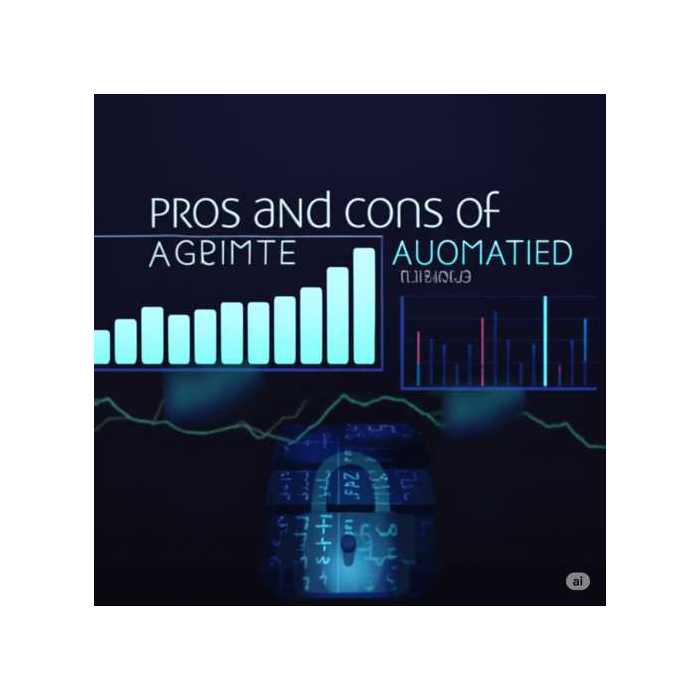The Robot Revolution | Decoding the Pros and Cons of Automated Trading
In the fast-paced world of finance, where every second can mean the difference between profit and loss, the allure of automated trading systems has grown exponentially. Imagine a tireless, emotionless machine executing trades based on predefined rules, 24/7. Sounds like a trader's dream, right? But like any powerful tool, automated trading comes with its own set of advantages and potential pitfalls.
Let's dive into the robot revolution and explore the pros and cons of automated trading.

The Pros: Why Traders Are Embracing Automation
1. Eliminating Emotion, Embracing Discipline: One of the biggest enemies of successful trading is human emotion. Fear and greed can lead to impulsive decisions, deviating from a well-thought-out trading plan. Automated systems, however, are immune to these psychological biases. They stick rigidly to their programmed rules, ensuring consistent discipline and execution.
2. Lightning-Fast Execution: In high-frequency trading, milliseconds matter. Automated systems can analyze market data and execute trades at speeds impossible for a human. This speed advantage is crucial for capitalizing on fleeting opportunities and minimizing slippage.
3. Backtesting and Optimization: Before going live, automated strategies can be rigorously backtested against historical data to assess their viability and profitability. This allows traders to identify flaws, optimize parameters, and gain confidence in their strategy before risking real capital.
4. Diversification and Multiple Strategies: With automated trading, you're not limited to monitoring one market or one strategy. You can deploy multiple automated systems across different asset classes and timeframes, diversifying your portfolio and potentially increasing your chances of finding profitable opportunities.
5. Reduced Stress and Time Commitment: Once set up, automated systems can operate independently, freeing up a significant amount of a trader's time. This allows for less screen time, reduced stress, and the ability to focus on other aspects of life or even develop new strategies.
6. Consistent Application of Rules: Human traders, even the most disciplined ones, can make mistakes or overlook details. Automated systems apply their rules consistently, every single time, minimizing errors and ensuring the strategy is followed precisely.
The Cons: The Dark Side of the Algorithm
1. Mechanical Failures and Technical Glitches: Automated systems rely on technology, which means they are susceptible to technical glitches, internet outages, power failures, or software bugs. A system malfunction at a critical moment can lead to significant losses.
2. Over-Optimization (Curve Fitting): While backtesting is crucial, there's a risk of "over-optimization" or "curve fitting." This occurs when a strategy is so finely tuned to historical data that it performs perfectly in the past but fails miserably in real-time market conditions, which are inherently unpredictable.
3. Lack of Human Intuition and Adaptability: Markets are dynamic and constantly evolving. While algorithms are great at following predefined rules, they lack the human intuition and adaptability to respond to unforeseen events, geopolitical shifts, or sudden market paradigm changes that might render their programmed logic ineffective.
4. Security Risks: As with any online system dealing with financial assets, automated trading platforms are vulnerable to cyberattacks and hacking. Ensuring robust security measures is paramount to protect your capital.
5. False Sense of Security and Over-Reliance: The "set it and forget it" mentality can be dangerous. Traders might become overly reliant on their automated systems, neglecting to monitor their performance or understand the underlying market conditions.
6. Continuous Monitoring and Maintenance: Automated systems are not truly "set and forget." They require continuous monitoring, maintenance, and periodic adjustments to ensure they are still performing as expected and adapting to changing market conditions.
7. Initial Setup Complexity and Cost: Developing or acquiring a robust automated trading system can be complex and expensive, especially for beginners. It requires programming knowledge, data feeds, and often specialized software.
Conclusion: A Powerful Tool, Not a Magic Bullet
Automated trading is undoubtedly a powerful tool that can offer significant advantages to traders. However, it's not a magic bullet for guaranteed profits. Success hinges on a deep understanding of market dynamics, robust strategy development, thorough testing, and ongoing monitoring.
For those considering venturing into automated trading, it's crucial to approach it with a realistic mindset, a commitment to continuous learning, and a healthy respect for both its potential and its limitations. The robot revolution is here, but the human element – in terms of strategy, oversight, and risk management – remains indispensable.
Popular Tags